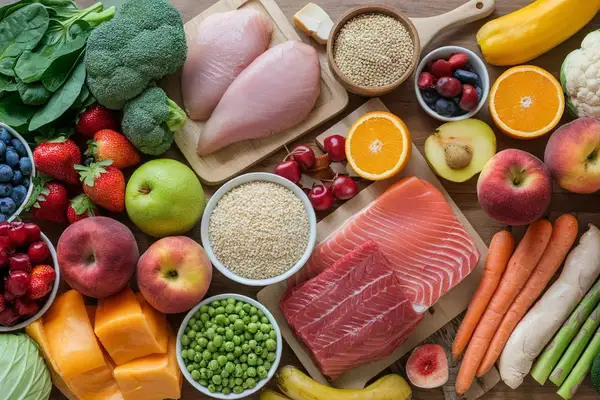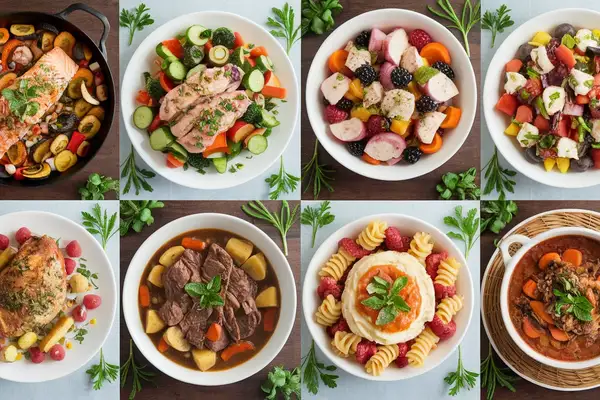50 Soft Foods to Eat After Tooth Extraction + What to Avoid
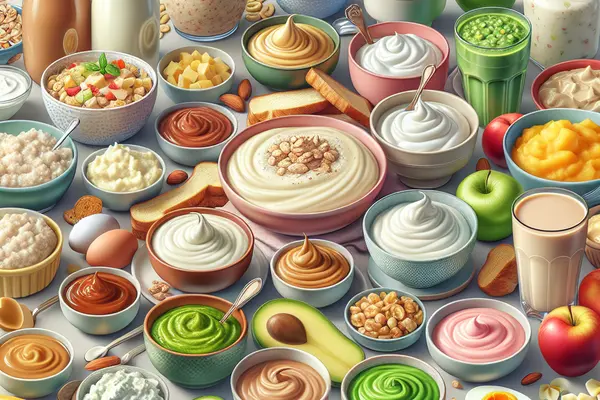
- Nutritional Considerations For Healing After a Tooth Extraction
- 50 Soft Foods to Eat After Tooth Extraction
- Foods to Avoid After Tooth Extraction
- Why is it Important to Eat Soft Foods After Tooth Extraction?
- How Long Do You Have to Eat Soft Foods After Oral Surgery?
- Tips for Preparing and Consuming Soft Foods
- Conclusion
- FAQs About Soft Foods to Eat After Dental Surgery
This post may contain affiliate links, meaning I may earn a commission if you make a purchase, at no extra cost to you. I only recommend products I trust. Thank you for your support.
After undergoing a tooth extraction, it’s crucial to pay close attention to your dietary needs to ensure a smooth and speedy recovery.
Your oral surgeon will likely recommend that you stick to a soft food diet for some time, as chewing on hard or crunchy foods can irritate the surgical site and delay healing.
To aid in this crucial journey, a carefully curated selection of soft foods to eat after oral surgery has been meticulously assembled to serve as a gastronomic compass for a swift recovery.
So, what to eat after tooth extraction? This article provides a comprehensive list of soft food diet ideas and 50 soft foods to eat after tooth extraction for a post-tooth extraction diet to support your healing process.
Nutritional Considerations For Healing After a Tooth Extraction
After a tooth extraction, it’s crucial to focus on meeting your nutritional needs to support the healing process.
Here are some key nutritional considerations after tooth extraction:
- Protein: Protein is essential for tissue repair and cell growth. Aim for high-protein soft foods like yogurt, cottage cheese, and smooth nut butters.
- Carbohydrates: Carbohydrates provide energy for your body during the healing process. Choose soft, easily digestible carbohydrates like mashed potatoes, oatmeal, and pureed fruits.
- Vitamins and Minerals: Nutrients like vitamin C, vitamin K, and calcium are important for proper wound healing. Include soft foods rich in these vitamins and minerals, such as smoothies, applesauce, and mashed vegetables.
- Hydration: Staying hydrated is crucial during the recovery period. Drink plenty of water, broths, and other soft, liquid-based beverages.
50 Soft Foods to Eat After Tooth Extraction
Tooth extraction can be a daunting experience, often requiring a careful soft food diet (easy to digest foods) during the recovery process to ensure proper healing and minimize discomfort.
These soft food diet ideas not only ensure you get the necessary nutrients but also help minimize the discomfort that can come with eating after a tooth extraction.
The key to a smooth recovery lies in consuming soft, nutrient-rich foods that are easy to chew and swallow.
Here are 50 soft foods to eat after tooth extraction:
1. Mashed Potatoes
- Mashed potatoes are a classic comfort food that provides a hearty, filling meal without requiring much chewing. They can be flavored with butter, milk, and even cheese for added taste and nutritional value.
2. Applesauce
- Applesauce is a smooth, sweet option that is easy to eat and digest. It offers a good source of vitamins and fiber, making it a healthy choice post-surgery.
3. Yogurt
- Yogurt is rich in probiotics, which help maintain a healthy gut flora. Choose plain or Greek yogurt without any chunks of fruit to avoid irritation.
4. Smoothies
- Smoothies are a versatile way to get a variety of nutrients. Blend fruits, vegetables, and yogurt or milk for a nutrient-packed drink. Avoid using a straw to prevent dry socket.
5. Broth-based Soups
- Chicken or vegetable broth is soothing and easy to consume. Make sure the soup is free of large chunks of vegetables or meat to avoid chewing.
6. Pudding
- Pudding is a sweet treat that is soft and smooth. It’s easy on the mouth and can come in various flavors to keep things interesting.
7. Ice Cream
- While ice cream should be consumed in moderation, its cold temperature can help numb the area and reduce swelling.
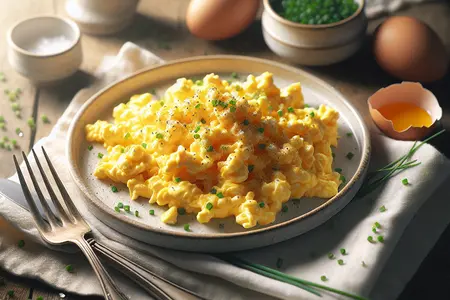
8. Scrambled Eggs
- Scrambled eggs are soft, protein-rich, and easy to prepare. They can be flavored with a little cheese or herbs for variety.
9. Oatmeal
- Oatmeal is filling and can be made creamy and soft. Adding a bit of milk or water ensures it’s not too thick, making it easy to eat.
10. Cottage Cheese
- Cottage cheese is soft and full of protein. It can be eaten on its own or blended with fruits for a sweet twist.
11. Jell-O
- Jell-O is light, smooth, and comes in a variety of flavors. It’s an easy dessert option that doesn’t require chewing.
12. Cream of Wheat
- Cream of Wheat is a warm, comforting cereal that is easy to digest. It can be flavored with honey or fruit puree.
13. Mashed Avocado
- Avocado is creamy and packed with healthy fats. Mashed avocado can be seasoned with salt and pepper for a tasty, nutritious snack.
14. Polenta
- Polenta is a cornmeal dish that can be served soft and creamy. It’s a great base for adding other soft ingredients like cheese or pureed vegetables.
15. Hummus
- Hummus is a smooth and creamy spread made from chickpeas. It’s rich in protein and can be enjoyed with soft pita bread.
16. Banana
- Bananas are naturally soft and easy to mash, making them an excellent post-extraction fruit.
17. Pumpkin Puree
- Pumpkin puree is smooth and nutrient-dense. It can be eaten plain or used as a base for soups and other dishes.
18. Custard
- Custard is rich and creamy, offering a soft dessert option that is gentle on the mouth.
19. Creamed Spinach
- Spinach cooked until soft and then blended with cream creates a smooth and nutritious side dish.
20. Mango Puree
- Mango puree is sweet, tropical, and easy to consume. It’s a great way to enjoy fruit without the need to chew.
21. Soft Cheese
- Soft cheeses like brie or ricotta are gentle on the mouth and can be eaten alone or spread on soft bread.
22. Tapioca Pudding
- Tapioca pudding is smooth and creamy, with small, soft pearls that are easy to swallow.
23. Pureed Vegetables
- Vegetables like carrots, peas, and squash can be cooked until very soft and then pureed into a smooth consistency.
24. Ramen Noodles
- Ramen noodles are soft and can be consumed in a flavorful broth, making them a comforting option.
25. Chia Pudding
- Chia pudding is made by soaking chia seeds in milk until they become soft and gel-like. It’s a nutritious and easy-to-eat option.
26. Pancakes
- Soft, fluffy pancakes can be an easy breakfast option. Ensure they are well-cooked and soft, and avoid crispy edges.
27. Rice Pudding
- Rice pudding is a soft, creamy dessert that combines rice with milk and sugar, creating a gentle and tasty treat.
28. Soft Tofu
- Soft tofu is rich in protein and can be eaten on its own or added to soups and smoothies.
29. Baby Food
- Baby food is designed to be smooth and easy to eat, making it a practical option during recovery.
30. Soft Fish
- Soft, flaky fish like salmon can be baked until very tender and then mashed with a fork.
31. Egg Salad
- Egg salad made with soft-boiled eggs and mayonnaise is a creamy, protein-rich option.
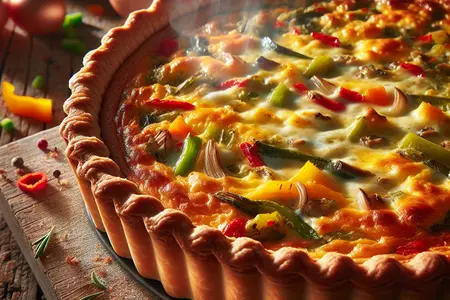
32. Quiche
- Quiche with a soft, flaky crust and smooth filling can be a nutritious meal without too much chewing.
33. Tomato Soup
- Tomato soup is smooth and comforting, providing vitamins and warmth.
34. Cereal with Milk
- Soft cereal that becomes mushy when soaked in milk can be an easy breakfast option.
35. Rice Noodles
- Rice noodles are soft and can be cooked in broth or stir-fried until tender.
36. Cream Cheese
- Cream cheese is smooth and can be spread on soft bread or eaten alone.
37. Pureed Beans
- Beans can be cooked until very soft and then pureed into a smooth consistency.
38. Grits
- Grits are a Southern dish made from ground corn, cooked until creamy.
39. Soft Pasta
- Overcooked pasta can be very soft and easy to swallow, making it a suitable option.
40. Cauliflower Mash
- Cauliflower can be cooked and mashed like potatoes, creating a low-carb alternative.
41. Avocado Smoothie
- Blending avocado with milk and a bit of honey creates a creamy, nutritious smoothie.
42. Butternut Squash Soup
- Butternut squash can be cooked until very soft and then pureed into a smooth soup.
43. Custard Yogurt
- A mix of custard and yogurt creates a smooth, creamy, and nutritious dessert.

44. Pureed Meat
- Meat can be cooked until very tender and then pureed into a smooth consistency.
45. Mousse
- Mousse is a light and airy dessert that is soft and easy to eat.
46. Poached Eggs
- Poached eggs are soft and can be eaten without much chewing.
47. Fruit Puree
- Various fruits like peaches, pears, and melons can be pureed for a smooth, easy-to-eat treat.
48. Zucchini
- Cooked zucchini becomes very soft and can be mashed or pureed.
49. Soft Bread
- Soft, crustless bread can be eaten with spreads like butter or cream cheese.
50. Blended Soups
- Any vegetable soup can be blended to a smooth consistency, ensuring it is easy to consume without chewing.
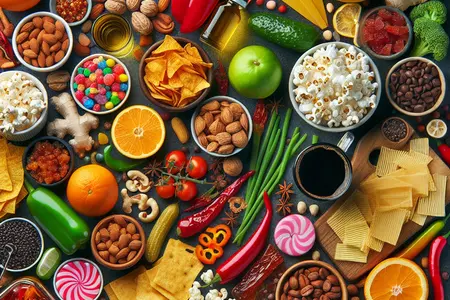
Foods to Avoid After Tooth Extraction
While you’re recovering from a tooth extraction, it’s important to avoid certain foods that could irritate the surgical site or delay the healing process.
Foods to avoid after tooth extraction include:
- Chips: Hard and crunchy, can dislodge the blood clot in the tooth socket, leading to dry sockets and delayed healing.
- Nuts: Hard and crunchy, can irritate the extraction area and cause complications.
- Hard Candy: Can dislodge the blood clot and delay the healing process.
- Popcorn: Kernels can get stuck in the extraction site, causing irritation and potential complications.
- Extremely Hot Foods and Drinks: Can cause discomfort and delay healing, it’s best to consume lukewarm food and drinks until the mouth has fully healed.
- Chili Peppers, Garlic, and Ginger: Can cause inflammation, increase sensitivity, and worsen existing pain or discomfort from the procedure. It’s best to avoid spicy foods until the mouth has fully healed.
- Citrus Fruits, Tomatoes, and Pickles: The acidity of these foods can irritate the empty tooth socket, increasing sensitivity, and can strip away the protective enamel on the teeth, making them more prone to tooth decay.
- Steak, Jerky: Chewing hard or chewy foods can irritate the extraction area and dislodge the newly formed blood clot, leading to complications.
- Alcohol: Should be avoided as it can interfere with healing, prolong recovery time, and cause dangerous side effects when taken with pain medications or anti-inflammatory drugs.
Why is it Important to Eat Soft Foods After Tooth Extraction?
Eating soft foods after a tooth extraction serves several important purposes:
- Minimizes Discomfort: Hard, chewy, or crunchy foods can cause pain and discomfort at the extraction site, which is still healing. Soft foods are gentler on the area and help you avoid further irritation.
- Prevents Dislodging of the Blood Clot: The blood clot that forms at the extraction site is essential for proper healing. Eating soft foods helps prevent the clot from being dislodged, which could lead to a painful condition called “dry socket.”
- Supports Healing: Soft foods are easier to chew and swallow, allowing your body to focus its energy on the healing process rather than the physical act of eating.
- Maintains Nutrition: During the recovery period, it’s important to maintain a balanced diet to support your body’s healing. Soft foods can provide the necessary nutrients without causing further trauma to the surgical site.
How Long Do You Have to Eat Soft Foods After Oral Surgery?
Most dentists recommend a soft food diet for the first 7-10 days after oral surgery. However, the duration for which you’ll have to eat soft foods can vary depending on the complexity of your tooth extraction and your healing process.
It’s essential to follow the specific instructions provided by your oral surgeon, as they will be able to assess the progress of your healing and advise you accordingly.
Tips for Preparing and Consuming Soft Foods
Here are some helpful tips for preparing and consuming soft foods after a tooth extraction:
- Blend or Puree: Blend or puree your foods to achieve a smooth, creamy consistency that’s easy to swallow.
- Avoid Extreme Temperatures: Consume your soft foods at a lukewarm or cool temperature to avoid further irritation to the surgical site.
- Eat Slowly and Mindfully: Take small bites and chew thoroughly to avoid putting too much pressure on the extraction site.
- Stay Hydrated: Sip water or other soft, liquid-based beverages throughout the day to keep your mouth moist and promote healing.
- Avoid Straws: Using a straw can dislodge the blood clot, so it’s best to avoid them during the recovery period.
- Maintain Oral Hygiene: Gently clean your mouth and the extraction site as directed by your dentist, but avoid vigorous brushing or flossing.
Conclusion
Prioritizing a soft food diet after a tooth extraction is a crucial step in your recovery process.
By incorporating the 50 soft foods to eat after tooth extraction outlined in this guide, you can ensure that you’re getting the necessary nutrients to support healing while avoiding further irritation to the surgical site.
Remember to follow the specific instructions provided by your oral surgeon, stay hydrated, and maintain good oral hygiene practices during this time.
With a little planning and patience, you can look forward to a speedy and comfortable recovery.
If you’re facing an upcoming tooth extraction, bookmark this comprehensive guide to soft foods to help you navigate the recovery process with ease.
Don’t hesitate to consult your dentist if you have any questions or concerns about your dietary needs during this time.
- Foods to avoid while breastfeeding
- Taylor Swift’s diet plan and work out routine
- How to stop GERD cough quickly
- 5 foods to avoid while on Saxenda
- 7-day GERD diet plan
- How to make sea moss gel at home
- Is corn good for weight loss
- 7-day meal plan for cancer patients
- 7 foods to avoid with a pituitary tumor
- 6 week plan Ozempic weight loss results
- 7 foods to avoid with a UTI
- Foods to avoid if alkaline phosphatase is high
- 5 foods to avoid with trulicity
- 7 day meal plan for low potassium diet
- 3000 calorie meal plan
- 7-day elimination diet meal plan
FAQs About Soft Foods to Eat After Dental Surgery
What are some examples of soft, nutritious foods I can eat after a tooth extraction?
Some excellent soft food options include yogurt, pudding, applesauce, mashed potatoes, oatmeal, smooth nut butter, cottage cheese, scrambled eggs, mashed avocado, and pureed soups.
Can I resume my normal diet as soon as the extraction site feels better?
No, it’s important to gradually reintroduce harder, chewier foods even after the initial recovery period.
Your dentist will likely recommend slowly transitioning back to your regular diet over 2-4 weeks, to ensure the extraction site has fully healed.
What are the best foods to eat after a tooth extraction?
The best foods to eat after a tooth extraction include mashed potatoes, yogurt, applesauce, smoothies, and broths.
These foods are soft, easy to swallow, and gentle on the healing area, helping to prevent irritation and promote recovery.
Can I eat bread after tooth extraction?
You can eat soft, crustless bread after a tooth extraction. Avoid crusty or toasted bread as it can be difficult to chew and might irritate the extraction site.
Is ice cream good to eat after tooth extraction?
Yes, ice cream can be soothing and help reduce swelling after a tooth extraction. Opt for soft, plain flavors and avoid varieties with nuts or hard pieces.
Can I eat eggs after tooth extraction?
Yes, scrambled eggs are an excellent choice after a tooth extraction. They are soft, easy to chew, and rich in protein, which is beneficial for healing.
Is it okay to drink coffee after a tooth extraction?
No, it is generally advised to avoid hot beverages like coffee for the first few days after a tooth extraction to prevent irritation and complications like dry socket.
After a few days, you can reintroduce coffee gradually, depending on your comfort and healing.
